Links to external sources may no longer work as intended. The content may not represent the latest thinking in this area or the Society’s current position on the topic.
Cometary science after Rosetta
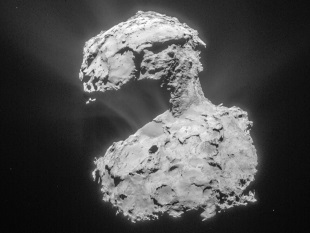
Scientific discussion meeting organised by Dr Geraint Jones, Dr Matthew Knight, Professor Alan Fitzsimmons and Dr Matt Taylor
Results from the European Space Agency’s Rosetta mission to Comet 67P/Churyumov-Gerasimenko are leading to a revolution in our understanding of these ancient bodies, and hence the conditions prevalent in the early Solar System. This meeting will report on all aspects of the mission's ground-breaking discoveries, placing them in the context of cometary science as a whole.
Download the meeting programme (pdf)
Enquiries: Contact the events team
Organisers
Schedule
Chair
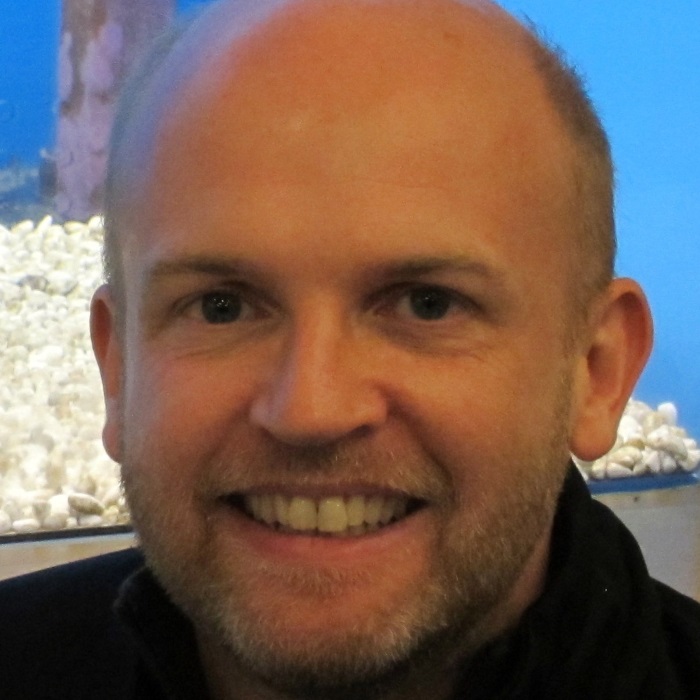
Dr Geraint Jones, Mullard Space Science Laboratory, University College London, UK

Dr Geraint Jones, Mullard Space Science Laboratory, University College London, UK
Dr Geraint Jones is a Reader in Planetary Science at University College London’s Mullard Space Science Laboratory and the Centre for Planetary Sciences at UCL/Birkbeck. Following his PhD in cometary science at UCL-MSSL, he worked at Imperial College London, and then as a National Academies of Science Resident Research Fellow at NASA’s Jet Propulsion Laboratory. This was followed by two years at the Max Planck Institute for Solar System Research, after which he returned to UCL-MSSL as an STFC Advanced Fellow. As well as his research into comets’ and other small bodies’ interactions with the solar wind, through both remote observations and in situ data, Dr Jones’s work has dealt with the relationships between outer planet magnetospheres and the icy moons that orbit within them.
| 09:05 - 09:30 |
Setting the scene: what did we know before Rosetta?
Tracing the cometary volatile inventory has shown that there are classes of comets that are typical, enriched and depleted with respect to organics, and carbon-chain species. These are not correlated with dynamical class. Isotopic information is known for a subset of these comets, however a detailed comparison between disk chemical models and solar system dynamical models will need to be made before the data can be interpreted in terms of formation location and delivery of volatiles to the terrestrial planets. There is increasing evidence that in contrast to the distinct dynamical reservoirs we see today that comet formation regions strongly overlapped in the protoplanetary disk. There is certainly evidence from returned samples from Stardust that there was wide-scale migration of disk material and that refractory comet dust experienced high temperatures near the sun. Both ground- and space-mission data have shown that comets are not chemically homogeneous, although further work is needed to understand whether this is primordial or evolutionary. A key result from space observations has been the realization that CO2 is a major driver of activity. Comet nuclei are now known to be very low-density highly porous bodies, with very low thermal inertia, and have a range of sizes that indicate a deficiency of very small bodies. The low thermal inertia suggests that comets may preserve pristine materials close to the surface, and that this might be accessible to sample return missions. Combining ground-based observations with in-situ observations we are gaining an understanding of complex surface processes and activity drivers, but many questions remain. 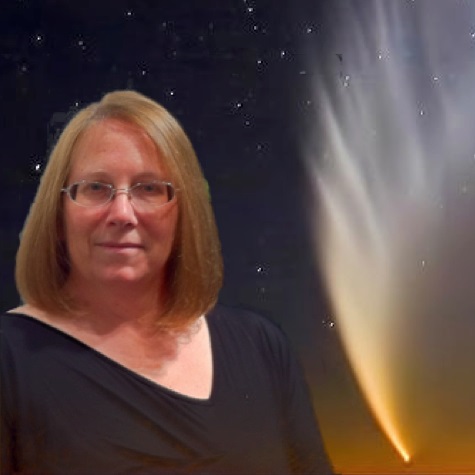
Dr Karen Meech, University of Hawai'i, USA

Dr Karen Meech, University of Hawai'i, USAKaren Meech is an astronomer at the University of Hawaii (UH) Institute for Astronomy. Her scientific interests include: chemical and physical evolution of comets and what they tell us about the protoplanetary disk and early solar system volatiles; observations of distant comets and the origin of terrestrial planet volatiles in planetary systems. She received her Bachelor of Arts in Physics at Rice University, and her PhD in planetary astronomy at MIT. Karen has been a Co-Investigator on three NASA Discovery Missions: Deep Impact, EPOXI, and StardustNExT, in charge of coordinating the world’s observing. Additionally, she is leading an effort from UH to develop a proposal for a mission to the main belt comets. She has been an active member in the international astronomy community and is the past President of the International Astronomical Union’s Division III on Planetary Systems Science. Karen leads the UH NASA Astrobiology Institute. She’s also very active in teaching and outreach. |
|
|---|---|---|
| 09:30 - 10:00 |
The Rosetta mission and orbiter science overview
The Rosetta Mission is the third cornerstone mission the ESA programme Horizon 2000. The aim of the mission is to map the comet 67-P/Churyumov-Gerasimenko by remote sensing, to examine its environment insitu and its evolution in the inner solar system. The lander Philae is the first device to land on a comet and perform in-situ science on the surface. This presentation will provide a brief overview of the mission and its science up to date, and an indication of the future with the Orbiter foreseen to be placed on the nucleus’ surface on 30 September 2016. 
Dr Matt Taylor, European Space Agency, The Netherlands

Dr Matt Taylor, European Space Agency, The NetherlandsDr Matt Taylor is Project Scientist for the ESA (European Space Agency) Rosetta mission based at the ESA technical centre in the Netherlands. He was born in London, gained his undergraduate Physics degree at the University of Liverpool, and a PhD from Imperial College London. His career has focused on the space plasma measurements, working in Europe and the US on the four spacecraft ESA Cluster mission, leading to a post at ESA, which started in 2005, working as the Project Scientist for Cluster and the ESA-China Double star mission. His studies have focused on energetic particle dynamics in near-Earth space and in the interaction of the Sun’s solar wind with the Earth’s magnetic field, particularly focusing on how boundary layer interactions evolve, leading to 70 first or co-authored papers. In 2013, he was appointed the Project Scientist on the Rosetta mission. |
|
| 11:00 - 11:30 |
Philae Lander mission and science overview
The Philae lander accomplished the first soft landing and the first scientific experimenting of a men-made spacecraft on the surface of a comet. Planned, expected, unexpected and unwanted things happened during the descend, the touch-downs and hopping across and the stay and operations on the surface. The key results of the mission were obtained during an about 60hours long period on 14-16 November 2014. Thereafter, Philae went into hibernation, waking up again in late April 2015 with subsequent short communication periods with Earth. The science return of the mission comes from 8 of the 10 instruments onboard and focuses on morphological, thermal, mechanical and electrical properties of the surface as well as on the surface composition. It allows a first characterization of the local environment of the touch-down and landing sites. Unique conclusions on the organics in the cometary material, the nucleus interior, the comet formation and evolution became available through measurements of the Philae lander in the context of the Rosetta mission. 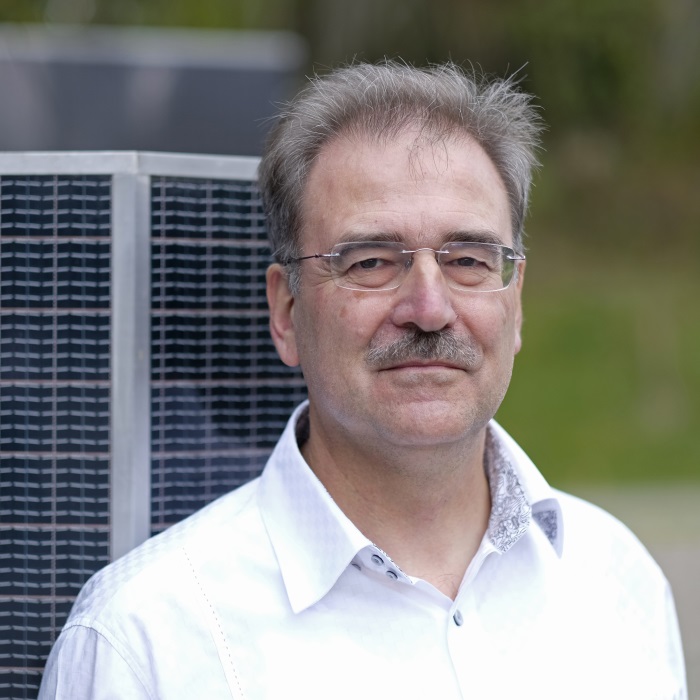
Dr Hermann Boehnhardt, Max-Planck Institute for Solar System Research, Germany

Dr Hermann Boehnhardt, Max-Planck Institute for Solar System Research, GermanyDr Hermann Boehnhardt graduated in astronomy at University of Erlangen in 1985. He has carried out research at Bamberg Observatory, University of Munich, European Southern Observatory in Chile, MPIA Heidelberg and since 2004 at MPS Katlenburg-Lindau, now Göttingen, and spaceflight operations at ESOC Darmstadt. His research fields are comets - nucleus and atmosphere, the Transneptunian region and minor bodies in the outer solar system, physical processes at dust in space. He has more than 10 years of involvement in design, construction, implementation and operations of astronomical instruments for and at large telescopes (FORSes for the VLT, LINC-NIRVANA for the LBT). Since 2004 he has been a lead scientist of the Philae lander project within ESA's Rosetta mission. |
|
| 11:30 - 12:00 |
Ground-based observations of Comet 67P/Churyumov-Gerasimenko
Rosetta is exploring the heart of comet 67P/Churyumov-Gerasimenko, its nucleus and inner coma, at distances of roughly 10-100 km. However, cometary comae stretch over 10s of thousands of km, and tails are millions of km long. A world-wide campaign of remote observations in parallel with the mission provides larger scale context by studying the coma and tails of 67P. Furthermore, this campaign takes advantage of the unique opportunity of having an orbiting spacecraft at the comet to provide 'ground truth' validation of observational results, extending the lessons learned from Rosetta to other comets that are studied with telescopes. 
Dr Colin Snodgrass, The Open University, UK

Dr Colin Snodgrass, The Open University, UKDr Colin Snodgrass is an astronomer who specialises in observations of the minor bodies of our solar system, and comets in particular. Originally from Scotland, he studied at St Andrews University and Queen's University Belfast, and has since held fellowship positions at the European Southern Observatory in Chile and the Max Planck Institute for Solar System Research in Germany. As a Marie Curie Fellow in Germany he combined his observational research with work in the Rosetta/OSIRIS team, linking spacecraft- and ground-based results. He continues this approach in his current position, as an Ernest Rutherford research fellow at the Open University, where he coordinates the international campaign of ground-based observations of comet 67P/Churyumov-Gerasimenko in support of the Rosetta mission, as part of a wider observational research programme on comets. |
Chair
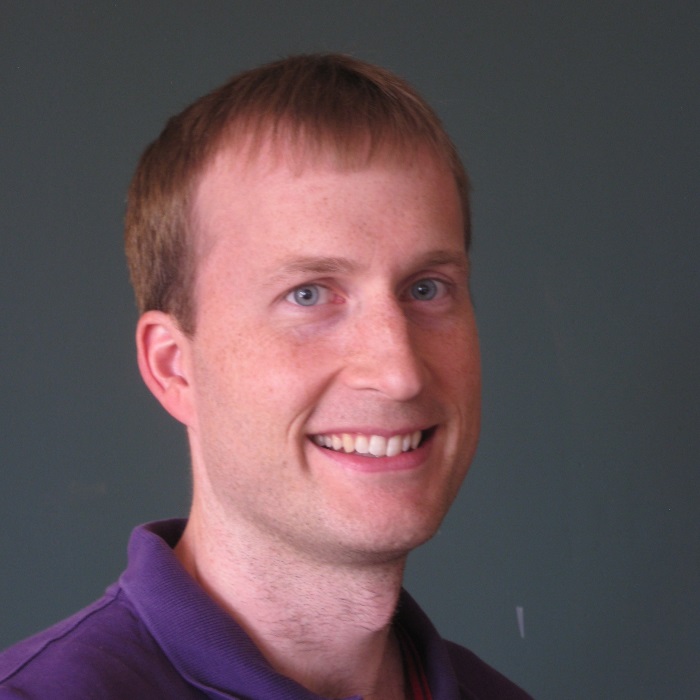
Dr Matthew Knight, University of Maryland, USA

Dr Matthew Knight, University of Maryland, USA
Matthew Knight is an Assistant Research Scientist at Lowell Observatory. He studies small bodies in the solar system with a focus on comets. Matthew primarily uses optical narrowband and broadband imaging to study cometary comae and infer properties of the nucleus such as composition, size, and rotation period. He has conducted detailed investigations of several Jupiter family and Oort Cloud comets, and has obtained observations in support of the ROSETTA, EPOXI, and Deep Impact spacecraft missions. Matthew is a world expert on sungrazing comets, who has studied more than 2000 comets observed close to the Sun by the SOHO and STEREO spacecraft. He is also interested in other reservoirs of volatiles in the solar system that could have delivered water to Earth, such as activated asteroids and dead or dormant comets in the near Earth object population.
| 13:30 - 14:00 |
Bulk properties of 67P's nucleus from Rosetta and comparison with other nuclei
One of the most exciting findings from the earliest stages of the Rosetta mission was the peculiar shape of comet 67P’s nucleus. While the overall size measured by Rosetta confirmed earlier results from ground and space based telescopes, the bi-lobed nature of the comet was still a huge surprise, for which the implications to cometary science are still to be fully understood. One strong possibility is that 67P is a contact-binary or merged system. Layering is visible across its entire surface, which strongly implies that this comet formed from the merging of two independently-formed comets. This in turn implies that low velocity collisions – on the order of cm to m’s per second – were occurring presumably in the early stages of formation of these bodies. Another important observation includes the changing rotation rate. Subsequent monitoring of the comet has provided a unique opportunity to observe the processes responsible for these changes. Just as striking as the shape is the range of topographical regions seen across the surface including deep ‘pits’. Imaging from Rosetta has shown that many of these pits are venting material to produce jets. Rosetta has also produced the first opportunity to continually observe changes on the surface of a comet. Here I will discuss these topics in more detail and provide a discussion of the implications these results and others have on the formation and evolutionary processes that cometary nuclei experience and the collisional environment that cometessimals were subjected to early in their formation histories. I will also include a comparison of the observed physical properties of 67P with other comets observed remotely and by visiting spacecraft. 
Dr Stephen Lowry, University of Kent, UK

Dr Stephen Lowry, University of Kent, UKDr Lowry is based at the University of Kent's Centre for Astrophysics and Planetary Science. He specializes in optical and infrared observations and modelling of Solar System Small Bodies, making use of both space-based and large ground-based telescope facilities. Dr Lowry is a member of the science team for the OSIRIS optical camera instrument on board ESA's Rosetta spacecraft, en route to comet 67P/Churyumov-Gerasimenko, and is Principal Investigator on a Large Programme at the European Southern Observatory to study near-Earth asteroids. Dr Lowry also serves on the STFC Solar System Advisory Panel that develops the roadmap for UK Solar System Research. |
|
|---|---|---|
| 14:00 - 14:30 |
On the chemical composition of the surface of 67P
Quite apart from the intriguing shape of the nucleus of 67P, the fact that it has a porosity of ~70%, and sheds dust grains with densities lower than air whilst having a surface layer that is reasonably hard, it also has a somewhat unexpected chemistry. Although water (ice) is likely to be a major constituent the comet appears to be drier than expected. In fact, once up close (as Rosetta is to 67P) it is very difficult to find visual/spectroscopic evidence for water at the surface of the comet. Furthermore, in situ measurements made directly at the surface also suggest that water is not as dominant as envisaged. As such attention is now turning to the “dust”. Herein lies the first issue; in principle, “dust” could include ice grains. But in fact it is becoming apparent that non-volatile dust is a prevalent component. Included here are grains of silicates and/or organics. For 67P the exact nature of these are still being actively investigated. I will describe some of the efforts to analyse the organic fraction and to relate materials that are apparently embedded in the nucleus with the species/fragments observed at a distance in the coma. 
Professor Ian Wright, The Open University, UK

Professor Ian Wright, The Open University, UKIan Wright is a planetary scientist who has spent his career studying the nature and distribution of ‘light elements’ (hydrogen, carbon, nitrogen, oxygen, sulfur, noble gases) in materials of extraterrestrial provenance. Back in the day, when specialised analytical equipment had to be designed and built rather that acquired by purchase requisition order, he developed a number of instruments and instrument concepts. In the laboratory these have been used extensively for the study of meteorites, lunar samples, martian rocks, cometary dust, etc. Spaceflight versions of the instruments have been sent to the surfaces of Mars and 67P. In the latter case, Ptolemy, a gas chromatograph-mass spectrometer system on board Philae has been successful in making measurements of cometary solids/dust and volatiles/gases. |
|
| 15:30 - 16:00 |
Coma Chemistry I: what creates what we see?
Comets are among the most pristine objects of the Solar System. The chemical composition of nucleus ices should provide insights for the conditions of formation and evolution of the early Solar System. A large numbers of molecules have now been identified in cometary atmospheres, both from ground-based observations and space, including in situ investigations of cometary atmospheres. This includes large organic molecules, also observed in star-forming regions. Molecular abundances relative to water present strong variations from comet to comet, and also vary along comet orbit. This chemical diversity may reflect different formation conditions in the primitive solar nebula, though questions arise concerning the extent to which abundances measured in cometary atmospheres are representative of the pristine composition of nucleus ices. I will present an overview of our present knowledge of comet ices composition and chemical diversity. 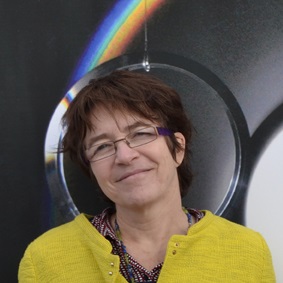
Dr Dominique Bockelée-Morvan, Observatoire de Paris, France

Dr Dominique Bockelée-Morvan, Observatoire de Paris, FranceDominique Bockelée-Morvan, Research director at the Observatory of Paris, has been working since her PhD on the chemistry of cometary atmospheres through observations in the millimeter and infrared domains. She was involved in most of the identifications of cometary molecules known so far, as well as in several key measurements of isotopic ratios, such as the deuterium-to-hydrogen ratio in water. Astronomy co-I of the HIFI instrument onboard the Herschel space observatory, she was deeply involved in several observational programs making use of Herschel, which led, e.g., to the discovery of a comet with a deuterium abundance equal to the terrestrial value, and to the detection of water vapor around the dwarf planet Ceres. Dominique Bockelée-Morvan is now focusing her scientific activity on Rosetta. She is co-I of the MIRO and VIRTIS instruments on-board Rosetta and participates in the planning activities, in addition to data analysis. |
|
| 16:00 - 16:30 |
Coma Chemistry II: 67P isotopic composition and implications
Isotopic signatures are probably the best tracers for the questions of the origin of matter. Isotopic ratios reflect on one hand the stars which produced the elements by nucleosynthesis, on the other hand chemical fractionation during formation of the different species. Looking at isotopologues in different molecules is a way to get the physical and chemical boundary conditions (temperature, time, degree of ionization, densities, gas/ice) for the environment where the molecules formed. This makes measurements of isotopologues one of the prime goals of the Rosetta mission. By now, we have measured D/H as well as all three sulfur isotopes in several molecules. We are working on the isotopes of the noble gases as well as of silicon. Carbon and oxygen isotopic ratios in CO2 are also on the list. We find isotopic ratios which do not necessarily reflect the standard solar system values. Many of them are dependent on the molecule they are embedded in. In this talk we try to show the emerging picture of what we see in comet C-G and how it relates to other solar system bodies and meteorites and what conclusions we can draw about the origin of cometary material at the current time. 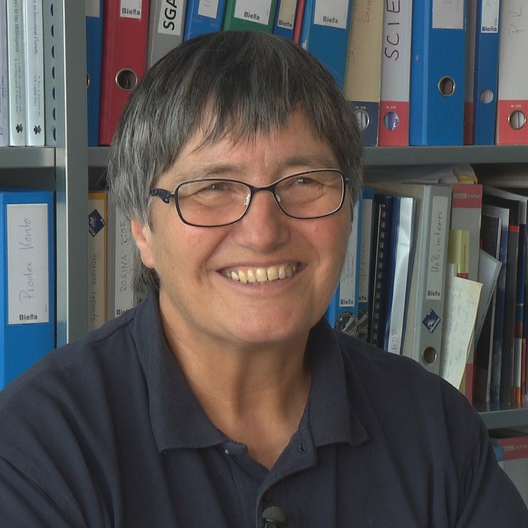
Dr Kathrin Altwegg, University of Berne, Switzerland

Dr Kathrin Altwegg, University of Berne, SwitzerlandDr Altwegg has over 25 years of experience in developing mass spectrometers for comet missions, in data analysis of mass spectrometers and in cometary science. She is Principal Investigator of the ROSINA instrument on the Rosetta mission to comet Churyumov-Gerasimenko and co-investigator on the dust mass spectrometer COSIMA on Rosetta. Involved in the Giotto Ion mass spectrometers HIS and HERS to comet Halley (Hardware and data analysis phase). Lead Scientist for the Bern calibration facility for solar wind and magnetosphere instrumentation (Casyms), the neutral molecular beam facility (Casymir) to simulate cometary outflow as well as for the Low Energy Ion Source (LEIS) which simulates cometary thermal ions. |
Chair

Dr Matt Taylor, European Space Agency, The Netherlands

Dr Matt Taylor, European Space Agency, The Netherlands
Dr Matt Taylor is Project Scientist for the ESA (European Space Agency) Rosetta mission based at the ESA technical centre in the Netherlands. He was born in London, gained his undergraduate Physics degree at the University of Liverpool, and a PhD from Imperial College London. His career has focused on the space plasma measurements, working in Europe and the US on the four spacecraft ESA Cluster mission, leading to a post at ESA, which started in 2005, working as the Project Scientist for Cluster and the ESA-China Double star mission. His studies have focused on energetic particle dynamics in near-Earth space and in the interaction of the Sun’s solar wind with the Earth’s magnetic field, particularly focusing on how boundary layer interactions evolve, leading to 70 first or co-authored papers. In 2013, he was appointed the Project Scientist on the Rosetta mission.
| 09:00 - 09:30 |
Cometary dust throughout the Solar System: models and physics
Cometary dust is widely studied from spacecraft and astronomical observations and is often considered as reference for pristine cosmic dust also in other systems. The cometary dust and its fragments reside in the solar wind plasma in the interplanetary medium and cometary dust particles entering planetary atmospheres give rise to meteors. New results from Rosetta will therefore influence a broad range of research topics. This presentation will address cometary dust properties and models of cosmic dust in comparison to interplanetary and interstellar dust models. The role of cometary dust as a source of heavy ions and nanodust in the Earth atmosphere will be discussed. And finally the presentation addresses the formation of nanodust from comets or in the vicinity of comets and its plasma interactions in the coma and solar wind. 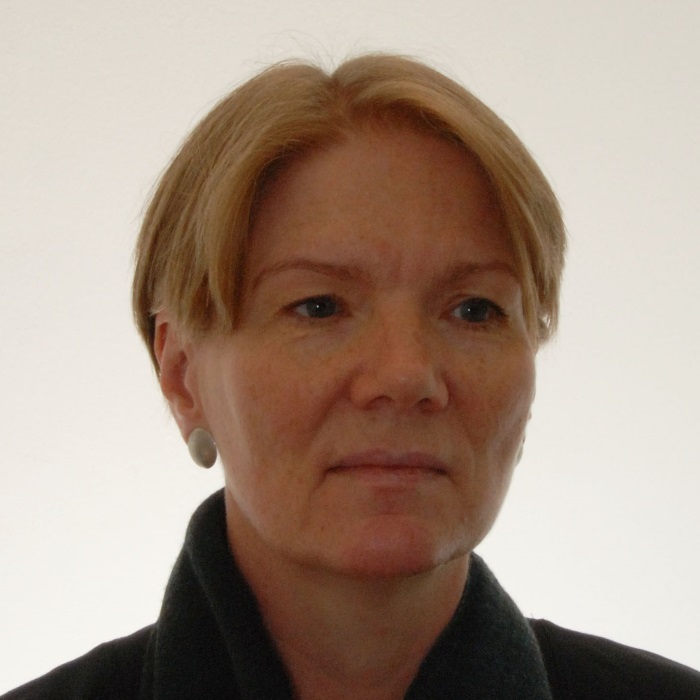
Dr Ingrid Mann, Umeå University and EISCAT Scientific Association, Sweden

Dr Ingrid Mann, Umeå University and EISCAT Scientific Association, SwedenIngrid Mann at present is Head of Projects at EISCAT Scientific Association and Professor, Adjunct at the Physics Department of Umeå University. At EISCAT she is strongly involved in preparations for the future EISCAT_3D, a multi-static phased-array radar system to study how Earth atmosphere is coupled to space. She previously worked in teaching and basic research institutions in Europa, United States and Japan, as well as for ESA and NASA Space Centres. Her range of research includes activities related to the physics of cosmic dust and cosmic dusty plasma, the physical processes in the interplanetary medium, the Earth’s ionosphere and space near Earth; the interstellar medium and circum-stellar systems, and the evolution of small bodies, meteors, meteoroids and dust in the solar system and in extra-solar planetary systems. |
|
|---|---|---|
| 09:30 - 10:00 |
Cometary dust particles collected in the inner coma of 67P by COSIMA onboard Rosetta
COSIMA, the COmetary Secondary Ion Mass Analyzer, is one of the three in-situ dust instruments onboard the Rosetta spacecraft, the ESA mission to comet 67P/Churyumov-Gerasimenko. Since August 2014, Rosetta has been escorting the comet nucleus on its journey inwards and outwards the inner solar system. The instrument COSIMA is collecting cometary dust particles by exposing metal targets in the inner coma, from 10 to hundreds of kilometers off the cometary nucleus. The targets are imaged with an optical microscope and a selection of the collected particles are analyzed by secondary ion mass spectrometry (SIMS). Thousands of dust particles have been collected and the sizes of the particles range up to sub-millimeter sizes and their differential size distribution has a mean power law exponent of about -3. The mass spectra contain either positive or negative ions revealing both, mineral and organic, components of the grains originating from selected surface area. Particle morphologies appear to be similar to that of interplanetary dust particles (IDPs). The particle mineral composition is consistent with the presence of minerals such as olivine and pyroxene and the overall elemental composition with CI chondrites. 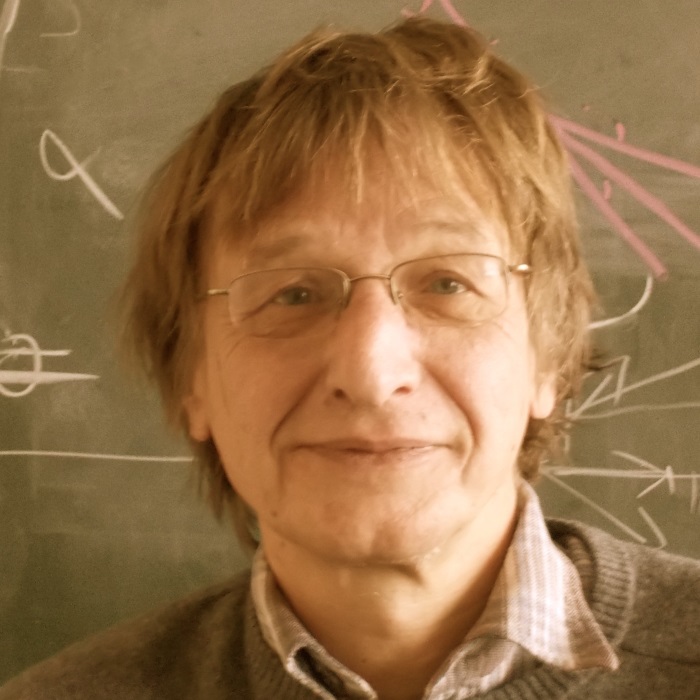
Dr Martin Hilchenbach, Max Planck Institute for Solar System Research, Germany

Dr Martin Hilchenbach, Max Planck Institute for Solar System Research, GermanyMartin Hilchenbach received his PhD in physics in 1986 from the University Innsbruck, Austria. Following 3 years as Research Fellow at the City University, London, UK, he worked on spacecraft instruments for the ESA solar observatory SOHO at the Max-Planck-Institute for Extraterrestrial Physics, Garching, Germany. Since 1996 he has been carrying out research at the Max Planck Institute for Solar System Research, Katlenburg-Lindau and Göttingen, Germany, and he is involved in present and future ESA missions such as ROSETTA to comet 67P/Churyumov-Gerasimenko and BepiColombo to planet Mercury. He has published more than 70 refereed papers. |
|
| 11:00 - 11:30 |
Interaction of comets with the solar wind: a Rosetta perspective
The Rosetta mission provides for an unprecedented possibility to study the interaction of comets with the solar wind. As the spacecraft accompanies comet 67P/Churyumov-Gerasimenko from its very low-activity stage through its perihelion phase the physics of mass loading is witnessed for various activity levels of the nucleus. While observations at other comets provided snapshots of the interaction region and its various plasma boundaries, Rosetta observations allow a detailed study of the temporal evolution of the innermost cometary magnetosphere. Due to the short passage time of the solar wind through the interaction region, plasma instabilities such as ring-beam and non-gyrotropic instabilities are of less importance during the early life of the magnetosphere. Large-amplitude ULF waves, the singing of the comet, is probably due to a modified Weibel instability. This instability drives a cross field current of pick-up cometary ions unstable. The initial pick-up of these ions causes a major deflection of the solar wind protons. Proton deflection, cross-field current and the instability induce a threefold structure of the inner most interaction region with the characteristic Mach cone and Whistler wings as stationary interaction signatures as well as the ULF waves representing the dynamic aspect of the interaction. 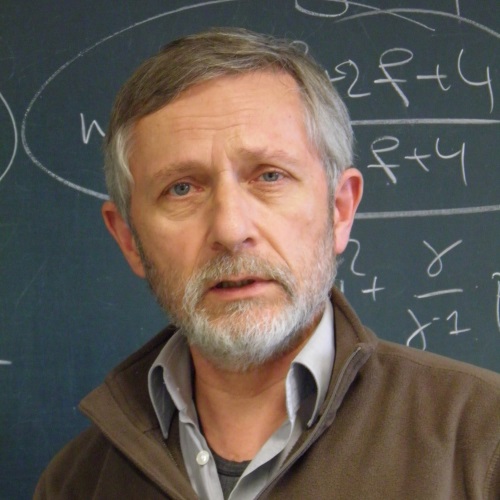
Professor Karl-Heinz Glassmeier, Technical University of Braunschweig, Germany

Professor Karl-Heinz Glassmeier, Technical University of Braunschweig, GermanyKarl-Heinz Glassmeier studied Physics, Geophysics, Philosophy, and Economy at the University of Münster. He is currently Professor and Chair of Geophysics at the Technical University of Braunschweig. Glassmeier is a Scientific Member of the Max-Planck-Society, a member of the German National Academy Leopoldina, and Principal Investigator of the magnetometer experiment on the ROSETTA mission to comet 67P/Churyumov-Gerasimenko as well as the BepiColombo mission to planet Mercury. He received the COSPAR Zeldovich Award in 1990, the Julius-Bartels Medal of the European Geoscience Union in 2010 and the Basic Science Award of the International Academy of Astronautics in 2014. He is author and co-author of more than 400 referred publications on space plasma physics, planetary science, and cometary physics. |
|
| 11:30 - 12:00 |
The Sungrazer Project: 20 years and 3,000 comets
Since its launch in December 1995, the ESA/NASA Solar and Heliospheric Observatory (SOHO) has discovered more than 3,100 previously unknown near-Sun and sun grazing comets, constituting well over half of all officially recorded comets. These discoveries have been enabled by the NASA-funded Sungrazer Project - one of the earliest and most successful citizen science projects – that allows amateur astronomers and enthusiasts to search for and report previously undetected objects in images returned by SOHO’s Large Angle and Spectrometric Coronagraph (LASCO). In this talk we will provide a comprehensive update of the Sungrazer Project and SOHO’s comet discoveries. We will give an overview of the primary comet populations observed in the data, namely the Kreutz, Meyer, “96P family” (Marsden, Kracht), and non-group comets, and discuss their typical orbital and morphological characteristics. We also provide a detailed discussion of their discovery statistics, providing both absolute annual discovery rates and discovery rates adjusted for the duty cycle of the LASCO instrument, and discussing the impacts of seasonality effects in discovery rates due to the variable viewing geometry as a consequence of SOHO’s orbit around the Sun. Finally, we briefly preview future heliophysics space observatories that may offer observations of near-Sun and sun grazing comets. 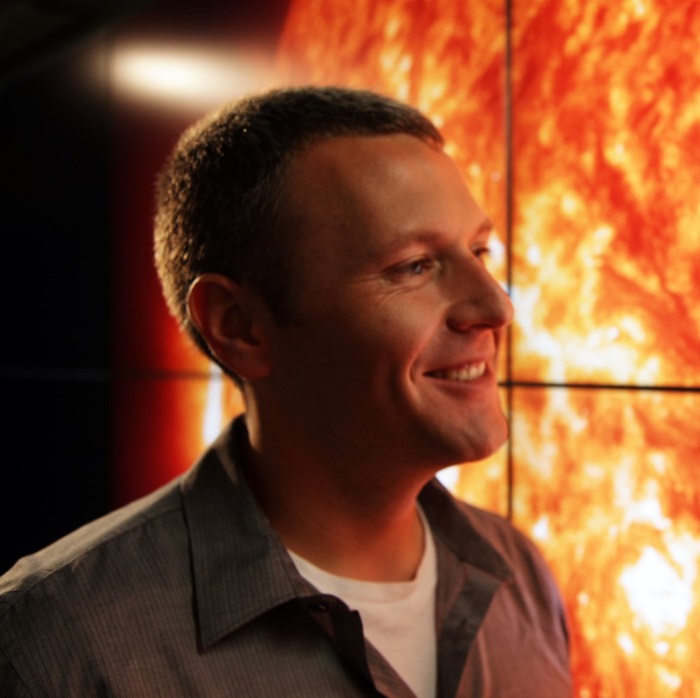
Dr Karl Battams, US Naval Research Laboratory, USA

Dr Karl Battams, US Naval Research Laboratory, USAKarl Battams is an astrophysicist and computational scientist based at the Naval Research Laboratory (NRL) in Washington DC. He has operated the NASA-funded Sungrazer Project since 2003, overseeing the discovery of over 3,000 comets. In 2012-2013, Karl was a member of NASA’s CIOC team that led unprecedented global observing campaigns for Comet ISON and Comet Siding Spring. Karl also performs data analysis and visualizations for various ongoing solar physics projects within the NRL Space Science Division, primarily with data from the SOHO and STEREO satellites. He holds a strong interest in the growing field of ‘Big Solar Data’ and addressing the challenge of the enormous quantities of solar data now being amassed. Karl is enthusiastic about outreach and presentation of science. He holds a monthly public Q&A at the Smithsonian National Air and Space museum in DC, and often visits local schools. He has given numerous public talks and media interviews, and participated in several television documentaries. |
Chair
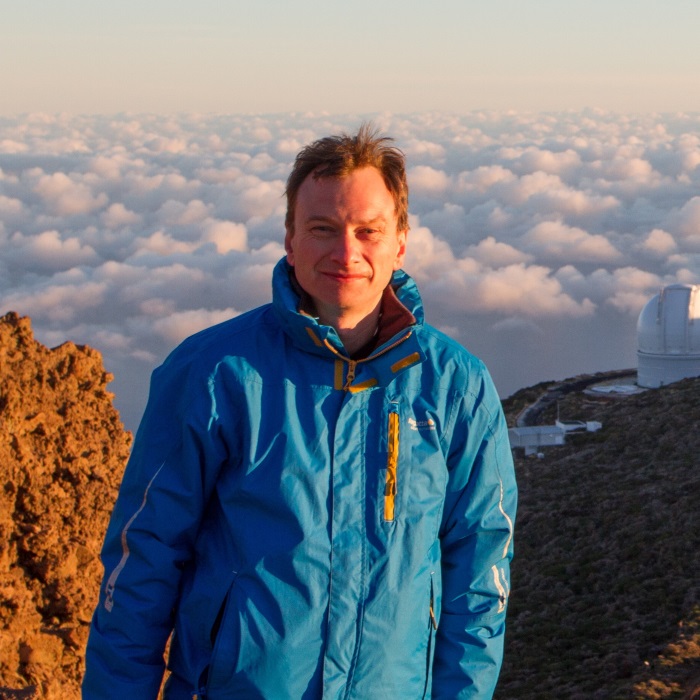
Professor Alan Fitzsimmons, Queen's University Belfast, UK

Professor Alan Fitzsimmons, Queen's University Belfast, UK
Alan Fitzsimmons is a Professor of Astronomy at Queen's University Belfast. His field of research is measuring the properties of comets and asteroids, primarily through optical and infrared photometry and spectroscopy. Current research interests include measuring the size distribution of cometary nuclei and performing ground-based observations of sun skirting/grazing comets. He has sat on many bodies from the Council of the Royal Astronomical Society to HST and ESO Time Allocation Committees. Most recently he has been a member of the Pan-STARRS 1 Science Consortium, the NEOShield1/2 projects, the ISSI International Near-Sun Comet Team and the ESA Rosetta Ground-Based Campaign.
| 13:30 - 14:00 |
Comets in the framework of the formation and evolution of the Solar System
I will review the dynamical evolution of comets, from the primordial planetesimal disk to their current reservoirs (Oort cloud, Kuiper belt, Scattered disk) in the framework of models of formation and evolution of the Solar System. The emphasis will be on the expected differences/similarities in formation place, and therefore physical and chemical properties, among long period and short period comets, as well as between comets and primitive asteroids. The collisional evolution of comets, associated with the dynamical history, will also be discussed, trying to answer the question: how primitive are comets? 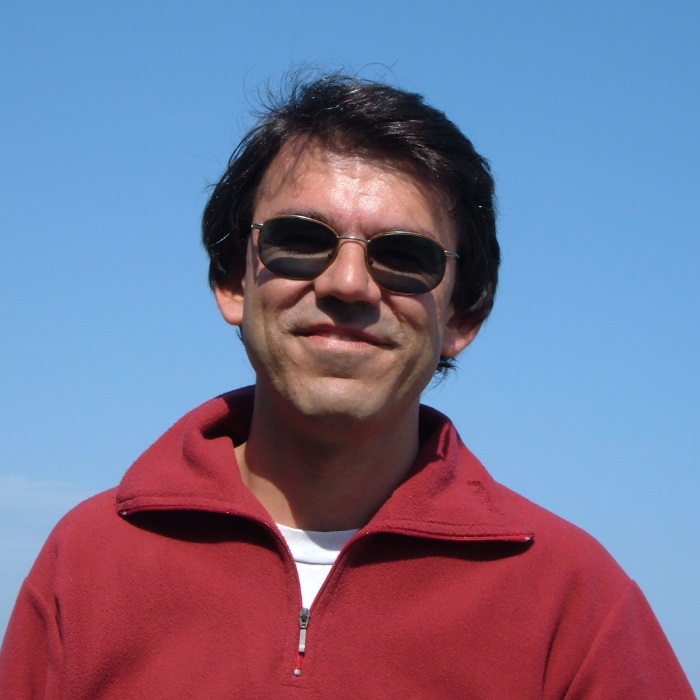
Dr Alessandro Morbidelli, Observatoire de la Côte d’Azur, France

Dr Alessandro Morbidelli, Observatoire de la Côte d’Azur, FranceAlessandro Morbidelli obtained his Ph.D. in Mathematics in 1991 from the University of Namur (Belgium). Since 1993 he has worked as a planetary scientist at the Observatoire de la Cote d'Azur in Nice, France. His work concerns mostly the formation and the dynamical evolution of the Solar System (planets and small bodies) and of planetary systems in general. He is the Director of the national Program for Planetary Science and Associated member of the Royal Academy of Science of Belgium. |
|
|---|---|---|
| 14:00 - 14:30 |
Main Belt Comets and activity in other unusual places
Main-belt comets (MBCs) are a recently identified class of small solar system objects that exhibit comet-like mass loss indicative of ice sublimation, yet have orbits indistinguishable from those of main-belt asteroids. These objects have drawn significant interest since their surprising discovery in the main asteroid belt (previously believed to consist entirely of inert bodies) due to (1) the implication that MBC activity is driven by the sublimation of volatile material (presumed to be water ice), (2) indications that most MBCs likely formed in situ in the main asteroid belt, and (3) the possibility that icy bodies from the asteroid belt were a significant primordial source of the Earth's current water inventory. With MBCs as potential tracers of the distribution and abundance of ice in the asteroid belt, we now have a potentially powerful means for probing the plausibility of the latter hypothesis, and also for gaining insights into and placing constraints on the formation of our solar system in general. I will review recent and ongoing research efforts aimed at determining the physical, dynamical, and thermal properties of both individual MBCs and the population as a whole, with the ultimate objective of achieving an improved understanding of small icy bodies in the inner solar system. I will also discuss the prospects for and implications of finding unexpected cometary activity in members of other potentially icy small body populations currently believed to consist largely or entirely of inert objects. 
Dr Henry Hsieh, Planetary Science Institute, USA

Dr Henry Hsieh, Planetary Science Institute, USAHenry Hsieh is a research scientist with the Planetary Science Institute in Tucson, Arizona. As part of his PhD dissertation work at the University of Hawaii, he led the discovery of main-belt comets (rare objects that exhibit cometary activity yet are found in the main asteroid belt) as a new class of comets, and has been studying them ever since. He is a highly experienced and well-travelled ground-based observer, having visited and conducted observations on telescopes on every continent except for Australia. He was also a key member of the Pan-STARRS1 survey's solar system team, leading the development of its comet detection algorithm, which has led to more than 70 comet discoveries to date. His current research includes observational studies of main-belt comets and their recently discovered cousins, disrupted asteroids, searching for new comets in survey and archival data, and dynamical evolution studies of asteroids and asteroid families. |
|
| 15:30 - 16:00 |
Comet dust is primitive and shows significant diversity. Our knowledge of the properties of primitive particles has expanded significantly through microscale investigations of cosmic dust samples (IDPs and AMMs) and of comet dust samples (Stardust and Rosetta's COSIMA), as well as through remote sensing (spectroscopy and imaging) via Spitzer and via spacecraft encounters with 103P/Hartley 2 and 67P/Churyumov-Gerasimenko. Microscale investigations show that comet dust and cosmic dust are particles of unequilibrated materials, including aggregates of materials unequilibrated at submicron scales. We call unequilibrated materials "primitive" and we deduce they were incorporated into ice-rich (H2O-, CO2-, and CO-ice) parent bodies that remained cold, i.e., into comets, because of the lack of aqueous or thermal alteration since particle aggregation; yet some Stardust olivines suggest mild thermal metamorphism. Primitive particles exhibit a diverse range of: structure and typology; size and size distribution of constituents; concentration and form of carbonaceous and organic matter; D-, N-, and O- isotopic enhancements over solar; Mg-, Fe-contents of the silicate minerals; the compositions and concentrations of sulfides, and of less abundant mineral species such as chondrules, CAIs and carbonates. The unifomity within a group of samples points to: aerodynamic sorting of particles and/or particle constituents; the inclusion of a limited range of oxygen fugacities; the inclusion or exclusion of chondrules; a selection of organics. The properites of primitive particles imply there were disk processes that resulted in different comets having particular selections of primitive materials. The diversity of primitive particles has implications for the diversity of materials in the protoplanetary disk present at the time and in the region where the comets formed. 
Dr Diane Wooden

Dr Diane Wooden |
|
| 16:15 - 17:00 |
Summary of discussions, placing the Rosetta results in context, and the next steps in cometary science
Rosetta has brought a wealth of new data about composition, structure, and processes on 67P/Churyumov-Gerasimenko (C-G). At this point the implications of the data are still being sorted but many things are already clear. There is an emerging consensus that Rosetta confirms our long-standing claims that except for the very near surface layers, the bulk of the nucleus is pristine, i.e., it has not changed in structure or composition since formation roughly 4.5 Gy ago. The one exception is the surface and near surface region which has been changed substantially both by removal of the surface and by redeposition of material from one portion of the nucleus to another. The measurement of D/H in C-G as being higher than in any other comet was the trigger for dynamicists to rethink the origin of Jupiter-family vis a vis Oort-cloud comets, such that they formed in a very extended region common to both dynamical classes. The detection of super-volatiles requires that the bulk interior have formed very cold and remained cold since formation. The nuclear surface exhibited many new and unexpected features – hard areas below the surface and at the surface elsewhere, long cracks, some of which look like thermal fracturing, while others could be mechanical stresses, surface changes in the form of subsidence in areas that rapidly expand radially, higher dust/ice ratios than many of us expected, and extremely high porosity (>70% in the bulk nucleus) with no evidence for macroscopic voids. This review will place the results from Rosetta, including those presented at this meeting, in the larger context of the ensemble of comets and look at where we go from here. 
Professor Michael F. A'Hearn, University of Maryland, USA

Professor Michael F. A'Hearn, University of Maryland, USAA’Hearn completed a B.S. degree in physics at Boston College (1961) and a Ph.D. degree in Astronomy at the University of Wisconsin (1966). Since then he has been on the faculty of the University of Maryland, now Emeritus Professor and (part-time) Research Professor. For most of his career he has worked primarily as an observational astronomer studying the small bodies of the solar system at wavelengths from the far ultraviolet to the radio. He coordinated a portion of the International Halley Watch, was the Principal Investigator for the Deep Impact mission and for that flyby spacecraft’s extended mission, EPOXI. He was also a team member for the Stardust NExT mission and is a member of two instrument teams on the Rosetta mission. He also is the Principal Investigator for the Small Bodies Node of NASA’s Planetary Data System. |
